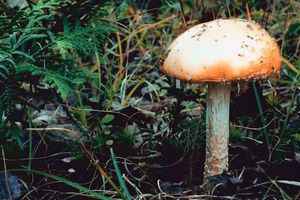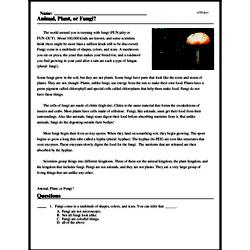Animal, Plant, or Fungi?
The world around you is teeming with fungi (FUN-jahy or FUN-GUY). About 100,000 kinds are known, and some scientists think there might be more than a million kinds still to be discovered. Fungi come in a multitude of shapes, colors, and sizes. A mushroom you eat on pizza, the yeast that makes your bread rise, and a toadstool you find growing in your yard after a rain are each a type of fungus (plural: fungi).
Some fungi grow in the soil, but they are not plants. Some fungi have parts that look like the roots and stems of plants. They are not, though. Plants, unlike fungi, use energy from the sun to make their own food. Plants have a green pigment called chlorophyll and special cells called chloroplasts that help them make food. Fungi do not have these things.
The cells of fungi are made of chitin (kigh-tin). Chitin is the same material that forms the exoskeletons of insects and crabs. Most plants have cells made of cellulose. Fungi, like animals, must get their food from their surroundings. Also like animals, fungi must digest their food before absorbing nutrients from it. But unlike animals, fungi do the digesting outside their bodies!




